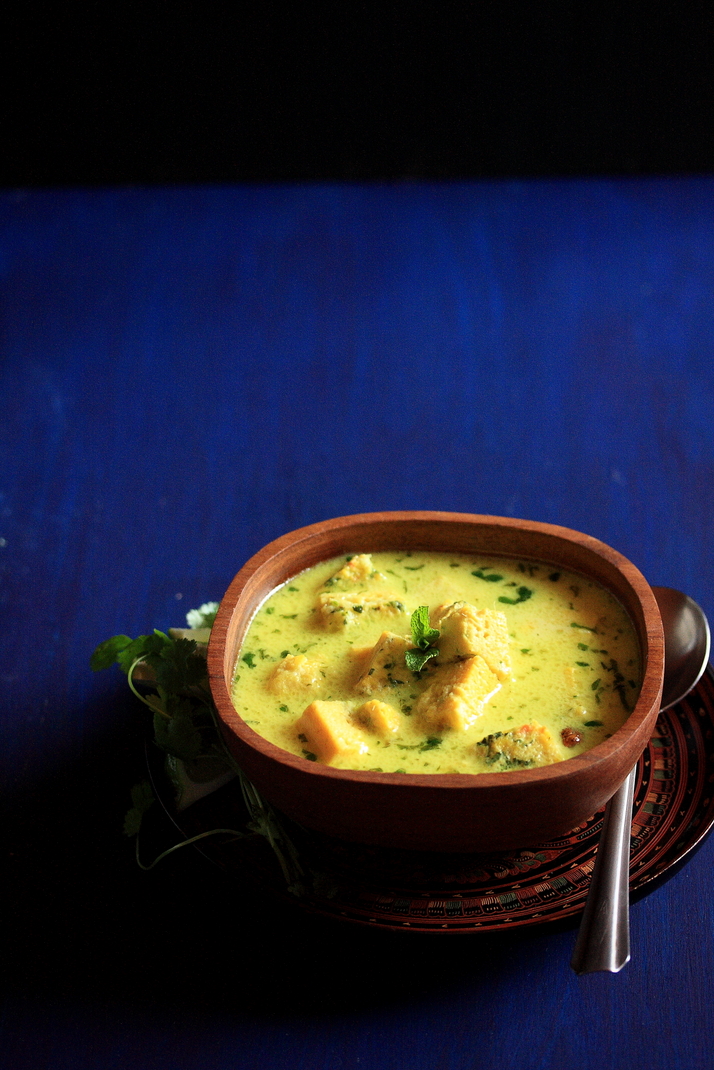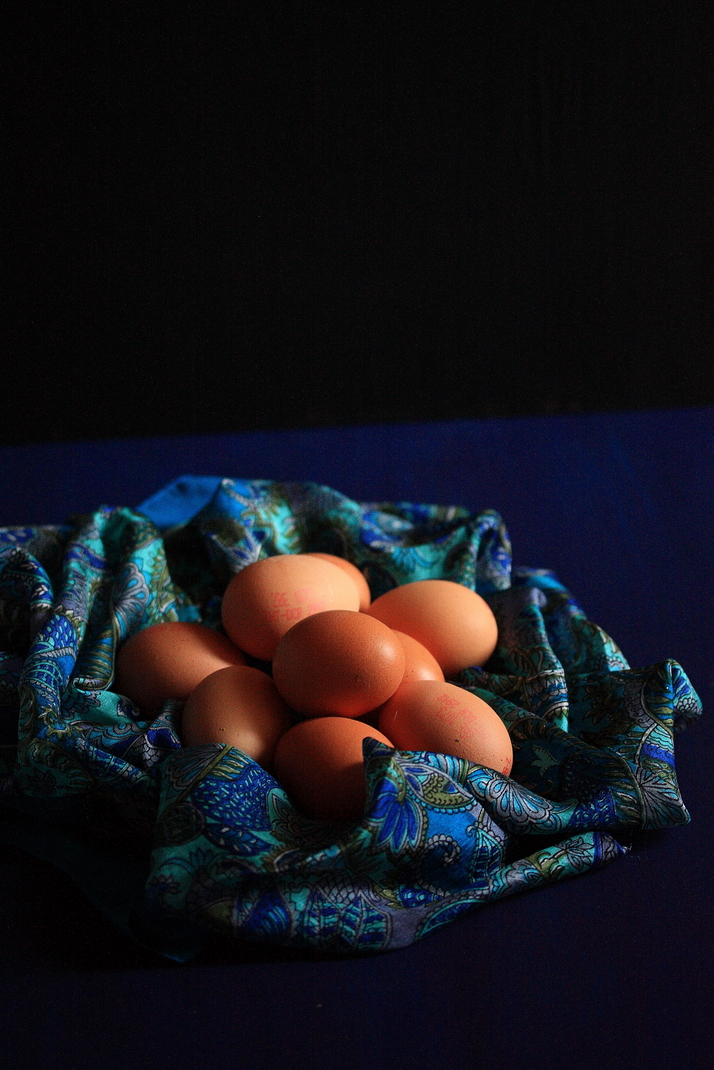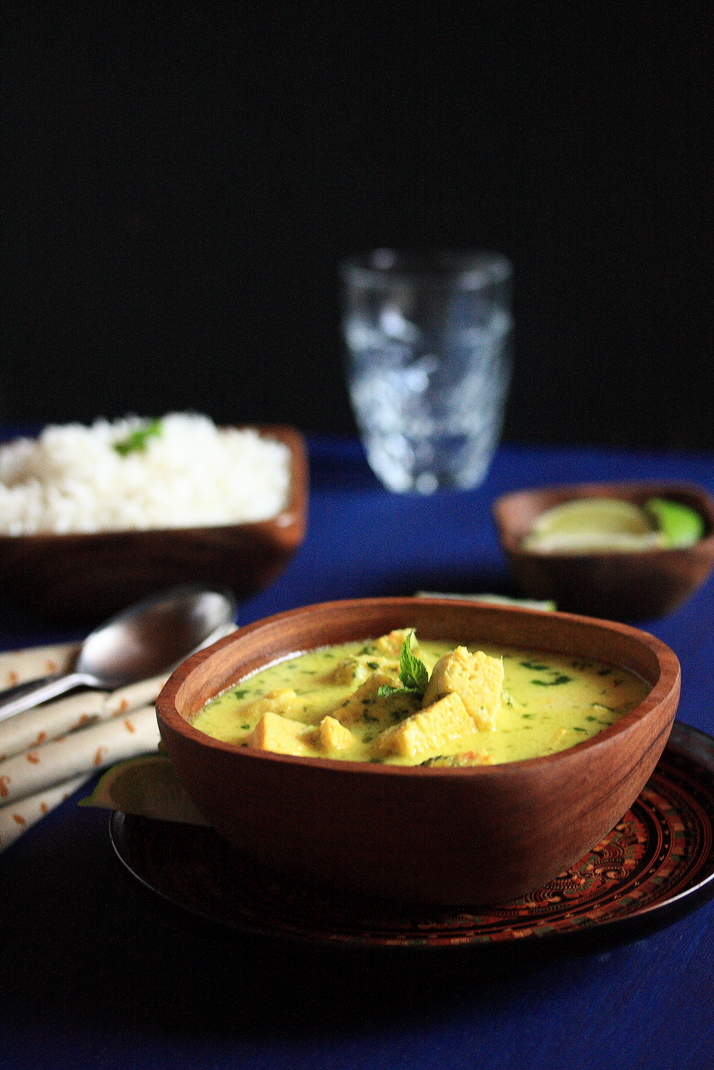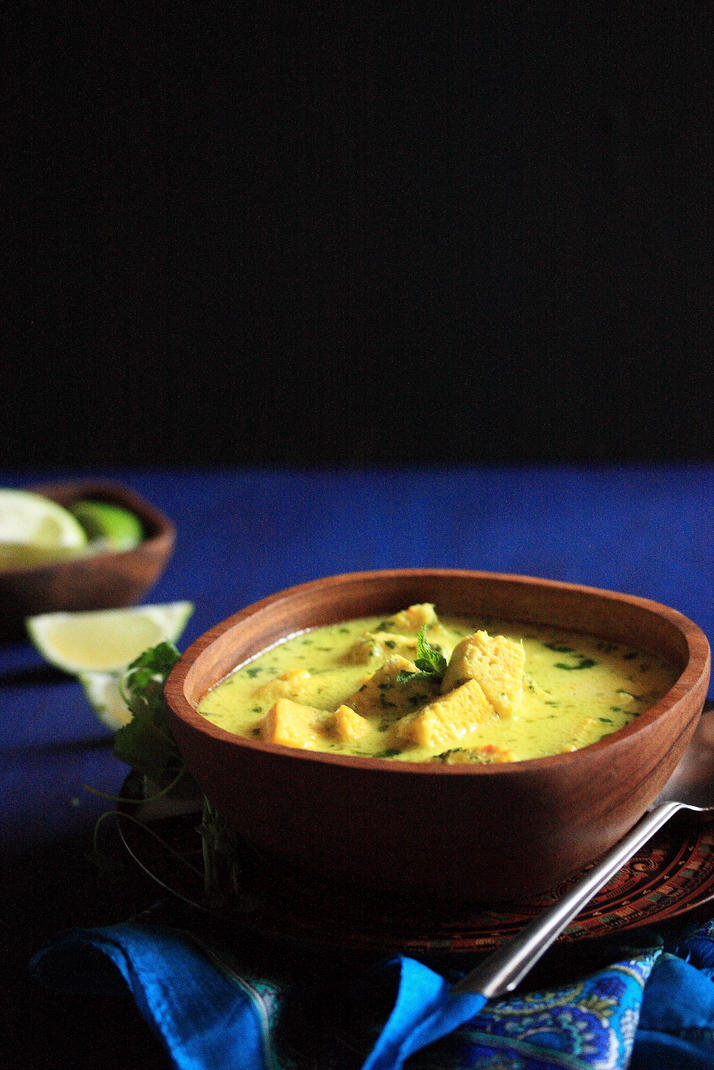
“The eggs are the backbone of cooking, the cement that holds the castle of cuisine together.”
From the book mastering the art of southern cooking!
As you all know the main components of egg is albumen and yolk, which is mostly composed of protein. Apart from proteins egg white contains water, small amounts of minerals and sugars whereas the yolk contains fat, vitamins A, D and minerals such as calcium, thiamine, and riboflavin. Depending on the feed of the bird the yolk colour ranges from yellow to deep orange (when the birds are fed with good feed).
The proteins are made up of long chains of amino acids. In the raw eggs proteins are in their native state, i.e. they are in globular form, which means amino acids are twisted, folded and/or curled up in a very specific way giving the protein its shape and properties. Any induced alteration (mechanical or heat) to these proteins will in turn significantly alter the entire structure of the egg.


The significant changes in the eggs happen due to the surface properties of the amino acids such as hydrophilicity (water-loving) and hydrophobicity (water shy). For an example in a curled up amino acids (imagine the protein in the form of a sphere) the water-loving part of the amino acids are facing outside interacting with water, whereas the water shy surface is facing inside (in the centre). This interaction with water will keep the protein in its shape until you start boiling or whipping your eggs.
When eggs are whipped the protein is exposed to air. Because, the mechanical energy obtained causes the proteins to uncurl to its original long chain leaving the water-loving parts to interact with water and the water shy parts are left dangling with air. These uncurled proteins bond with each other, creating a network to hold the air bubble. This process of creating network is called binding or coagulation which finally results in egg foam. Heating the egg foam will increase the pressure and volume of the trapped air inside the bubble, which is due to the expansion of air due to heat (ideal gas law). When treated with care, like in steaming and baking the amino acid network surrounding the air bubbles solidifies (by creating covalent bonds) due to heat and this structure will retain its shape even if the bubbles burst due to increase in pressure. By this process, the cakes, soufflé and omelette are fluffier.


The ability of eggs to incorporate more air while whipping is initiated by addition of few drops of acid such, lemon juice, vinegar or cream of tartar. Naturally, fresh eggs are acidic in nature and lose its acidic content while ageing. Thereby, by the addition of some amount of lemon juice to an egg for omelette makes the egg whites frothy during beating. While cooking steam rises through the omelette making the omelette fluffier.
So folks these were some interesting facts about eggs and how to make our omelette fluffier. Also, the initially part of this recipes is similar to the process of omelette, where the egg is not fried but steamed and added to the korma….do you fancy? Hop over to the recipe!


Ingredients
- Eggs - 3
- Onion - 1 medium size (finely chopped)
- Ginger garlic paste - 1/2 tspn
- Green chilli - 1
- Lemon juice - 1 tbspn
- Turmeric powder - 1/4 tspn
- Fresh coriander - 1 tspn (finely chopped)
- Vegetable oil - 1 tspn
- salt - 1/4 tspn
- Vegetable Oil – 2 tbsp
- Bay Leaf – 1
- Cinnamon Stick – 2 cm piece
- Green Cardamom – 2
- Black cardamom - 1
- Whole Cloves – 3
- Star anise – 1
- Onions – 1 medium size, finely chopped or grated
- Green Chilies – 1 or 2 (made to paste or finely chopped)
- Ginger and garlic paste – 1 tspn
- Turmeric powder – 1/2 tspn
- Yogurt – 150 gram
- Coconut milk – 300 ml
- Chopped fresh coriander – 1 tspn finely chopped
- Mint – 1 tspn finely chopped
- Lemon Juice – 1 tbspn
- Salt – to taste
- Water – 1/4 cups (if necessary to get desired consistency)
Instructions
- Warm the oil in a pan on medium heat.
- Add onions, finely chopped green chillies to pan and fry till onion become soft and transparent.
- Next add ginger and garlic past and fry (for about 30 sec) until raw flavour goes and it gets aromatic.
- Take then out of pan and let come to room temperature.
- Whip lemon juice and egg together until it gets frothy.
- To whipped egg add, fried onion, turmeric powder, chopped coriander and salt.
- Mix until well combined.
- Pour the egg mixture to lined and greased 16 cm (6 inch) cake pan. You could also use porcelain or glass pan.
- Steam the eggs the in the pressure cooker for about 10 mins without the weight on the nozzle, until the knife inserted comes out clean.
- Take the cooked egg out of pressure cooker and cut the eggs into cubes after it has reached room temperature.
- If not pressure, you can use steamer or microwave
- Heat oil in a pot on medium heat
- In the warm oil, add bay leaf, cinnamon, green cardamom, cloves, black cardamom and star anise. Roast for few seconds (it will get aromatic).
- Add onions, green chilli paste, some salt and cook for 2 minutes, stirring in between.
- Add ginger and garlic paste to the onions and cook for 2 additional minutes or until golden brown.
- Next add in yogurt and turmeric powder, cook until oil separates out from the pan.
- Then pour in coconut milk and bring it to one boil.
- When korma starts to boil add steamed eggs and boil for another two mins until required consistency is obtained.
- Finish it off with lemon juice and chopped coriander.
- Serve hot with rice, pulao, or roti.






Wow! That looks so good Ananda! Have never tried cooking eggs this way and I will be trying this soon! Love eggs
 Any chance of coming to coimby soon?
Any chance of coming to coimby soon?
How are you doing? Long time